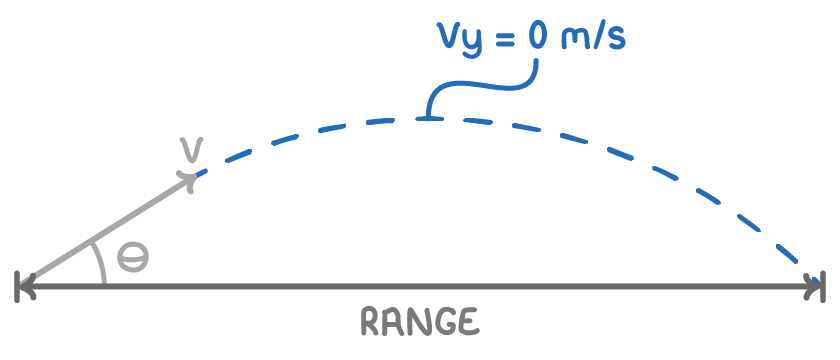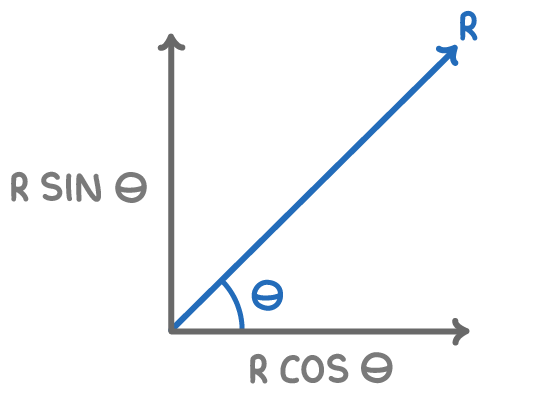Projectile Motion
This lesson covers:
- How to analyse projectile motion by separating horizontal and vertical components
- Resolving velocities into horizontal and vertical vectors
- Using equations of motion to determine the path and time of flight
Think about horizontal and vertical motion separately

- A projectile is any object with an initial velocity that then moves freely under gravity
- The horizontal and vertical components of a projectile's motion are independent
- The horizontal velocity remains constant while the vertical velocity changes due to gravity
- This causes the curved path typical of projectile motion
- The vertical component of velocity is 0 m/s at the highest point
Worked example: Calculating the range of a projectile
Sharon fires a scale model horizontally from 15 m high with a speed of 100 m/s. Determine the time of flight and horizontal distance traveled, assuming no air resistance.
Step 1: Formula
s = u t + 21a t2
Step 2: Rearrangement
t = √a2 s
Step 3: Substitution and correct evaluation
s = 15 m
u = 0 m s−1
v =
a = 9.81 m s−2
t = ?
t = √9.812×15
t = 1.7487 s
Step 4: Calculate range
range = horizontal velocity x flight time
range = 100 x 1.7487 = 174.9 m
Motion at an Angle Requires Vector Resolving
- Forces and velocities can act in any direction
- Motion must be resolved into horizontal and vertical vectors using trigonometry
- The initial velocity determines the time of flight and maximum height
Consider an object moving with velocity R at an angle of θ to the horizontal.

The horizontal and vertical components can be calculated:
- horizontal component = Rcos(θ)
- vertical component = Rsin(θ)
Worked example: Javelin throw
A javelin is thrown at a speed of 21 m/s at an angle of 45° to the horizontal. Determine the range of the javelin.
Step 1: Calculate vertical and horizontal components
ux=cos(45°)×21=14.849 m s−1
uy=sin(45°)×21=14.849 m s−1
Step 2: Calculate time to reach highest point
s = 0 m
uy = 14.849 m s−1
vy = 0 m s−1
a = - 9.81 m s−2
t = ?
t=av−u
t=−9.810−14.85=1.5136 s
Step 3: Calculate total flight time
total flight time = 2 x 1.5136 = 3.027 s
Step 4: Calculate range of javelin
range = horizontal velocity x flight time
range = 14.849 x 3.027 = 44.95 m